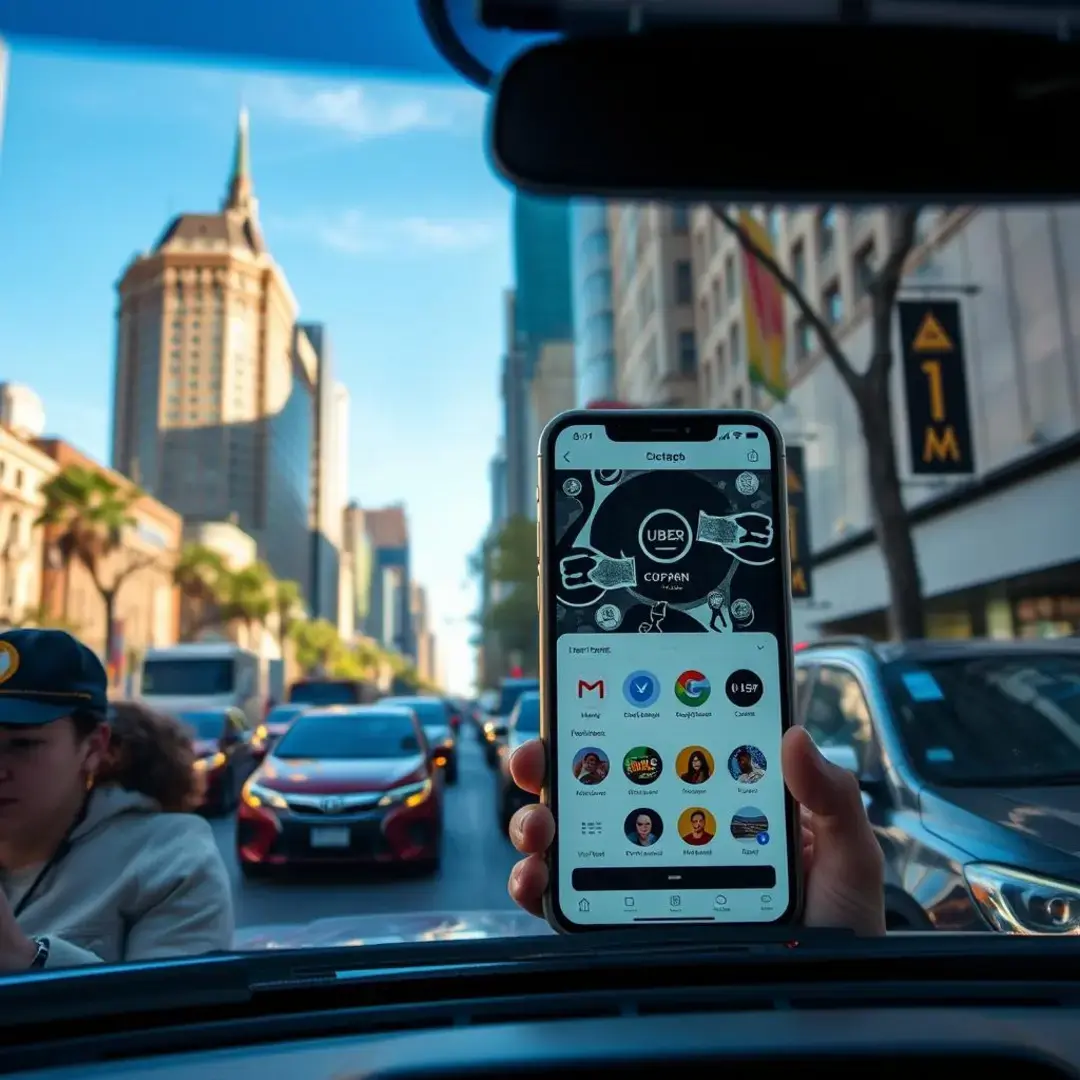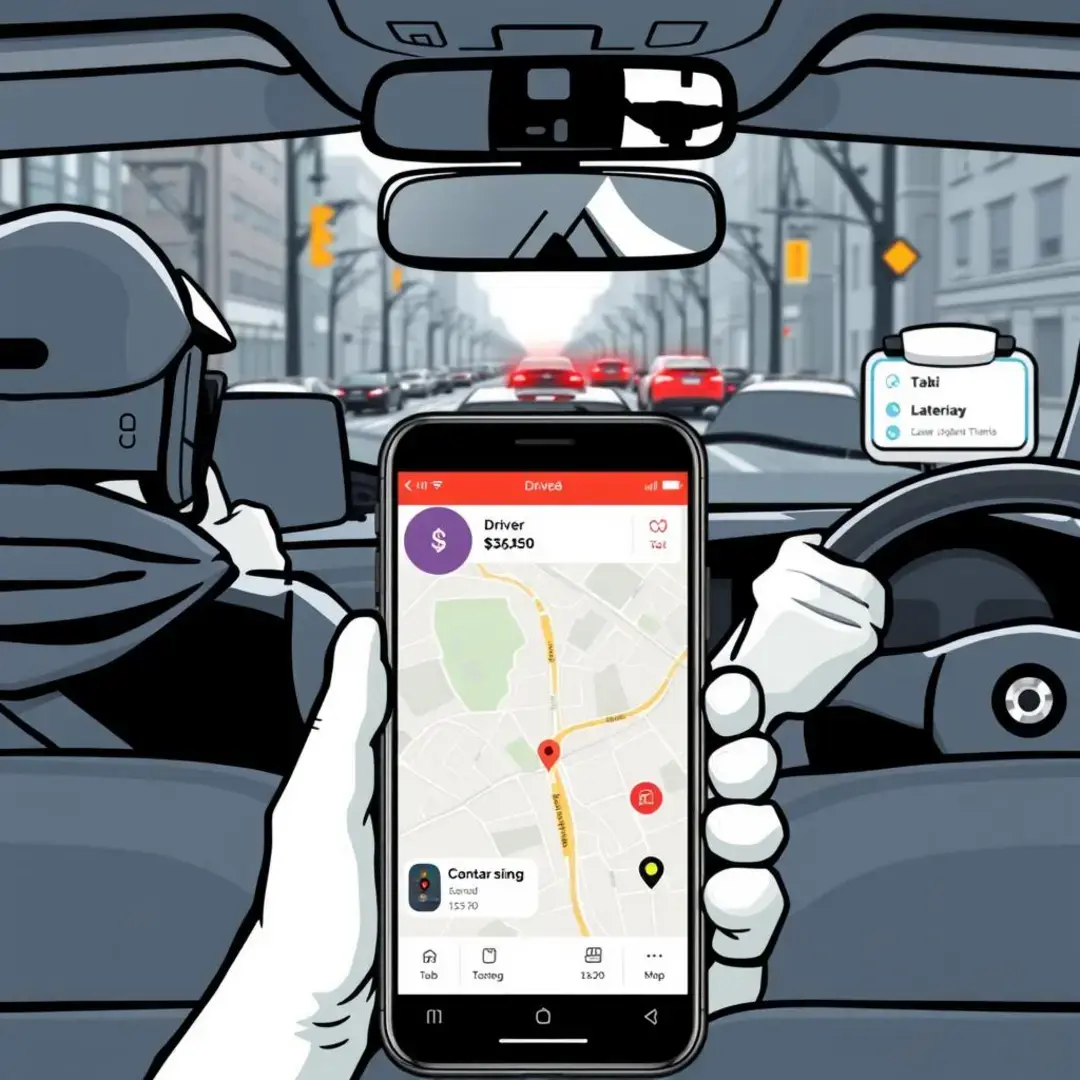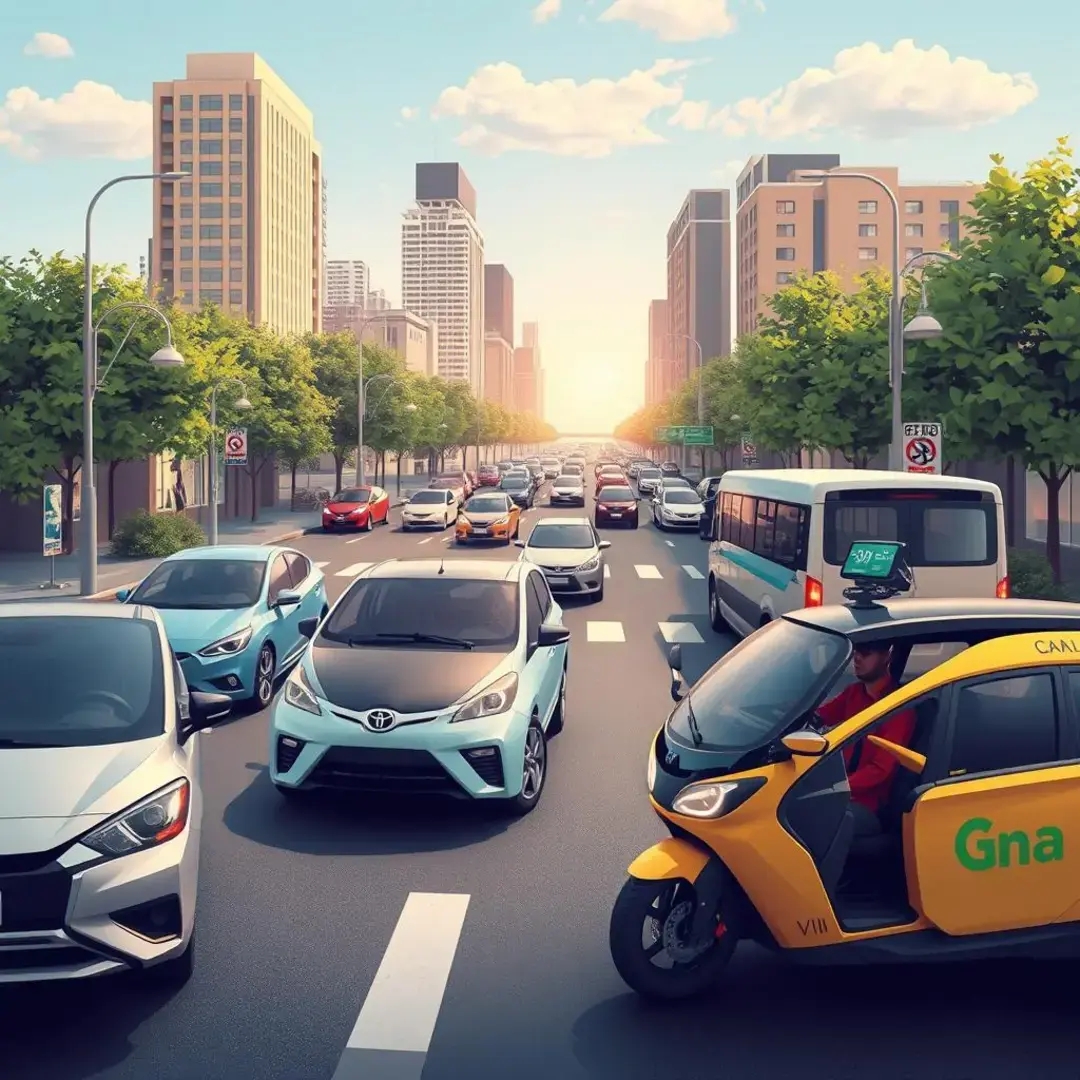Business Model Uber: Overhauling Traditional Transportation
I. Introduction: Disrupting the status quo

A. The pre-Uber era: limitations of traditional taxis
Before Uber turned the transportation industry on its head, utilizing traditional taxis often came with a range of frustrations. One of the most significant issues was the inconsistent pricing, where passengers had to rely on the driver’s discretion to decide the fare. This unpredictability often led to uncomfortable negotiations that left passengers feeling uncertain and apprehensive about their rides.
Furthermore, the ad-hoc nature of taxi services meant that users could never be sure how long they’d have to wait for a cab. This lack of transparency was a major hurdle, particularly during peak hours when demand surged but the supply of available taxis did not keep pace.
In the past, booking a taxi typically involved hailing one from the street or calling a despatch service—both methods fraught with their own inefficiencies. This lack of accessibility meant that those in less populated or remote areas often struggled to find reliable transportation. Additionally, the process of identifying and accessing the nearest available taxi was a time-consuming experience that detracted from user convenience.
As a result, many consumers started to seek more dependable and efficient alternatives. Such growing dissatisfaction paved the way for innovative solutions like Uber, which prioritized user experience above all else.
B. The rise of the sharing economy and on-demand services
With the advent of smartphone technology, a seismic shift occurred in consumer expectations for convenience, speed, and accessibility. People began to seek services that provided instant gratification, a concept at the heart of the sharing economy. Uber recognized this change and effectively positioned itself as a pioneer of on-demand transportation, where requesting a ride became as effortless as a tap on a screen.
This change not only catered to the pressing need for immediate solutions but also engendered a sense of trust and reliability among consumers who had long been disillusioned by traditional modes of transport.
The technological advancements of the 21st century bolstered the rise of this new sharing economy. With the integration of GPS tracking, real-time data analytics, and seamless payment systems, individuals could now engage with services in ways previously inconceivable. Uber’s app illustrated how technology could provide solutions to supply-demand mismatches, facilitating quicker connections between riders and drivers.
As the landscape evolved, so did the expectations of users. They now sought more than just transportation; they desired a comprehensive app experience that offered everything from real-time tracking to secure payment options.
II. Core components of the Uber business model

A. Two-sided marketplace: connecting riders and drivers
The brilliance of Uber’s business model lies in its establishment of a two-sided marketplace, acting as a connector between drivers and riders. An essential part of their strategy involves acquiring new riders while keeping existing users engaged. From offering discounts on first rides to implementing loyalty programs, Uber seeks to build a community where users feel valued and encouraged to return.
Marketing strategies that emphasize convenience, reliability, and efficiency have become crucial positioning elements. By continually enhancing user experience through app updates and features, Uber maintains a competitive edge, ensuring high user retention rates.
On the flip side, Uber’s recruitment and management of drivers are equally pivotal to its success as a platform. The company utilizes technology to streamline driver onboarding and provides flexible working conditions that attract a diverse pool of driver-partners. Furthermore, training and support initiatives equip drivers with the necessary resources to excel in their roles, ensuring customer satisfaction remains high.
By fostering an environment where drivers can thrive financially, while also promoting good practices and safety protocols, Uber not only expands its operational capacity but also cements the trust of riders in the quality of service provided.
B. Dynamic pricing and surge algorithms
One of the most notable innovations within Uber’s business model is its use of dynamic pricing, a mechanism designed to balance real-time demand with the supply of available drivers. During peak times, such as rush hours or inclement weather, the surge pricing algorithm efficiently adjusts fares to encourage more drivers to become available for rides. This ensures that the rider’s need for transportation can be met with an appropriate driver supply.
While this system effectively optimizes the marketplace dynamics, it reflects how technology can be leveraged to enhance service delivery across sectors. Riders may sometimes experience higher fares, but it’s a small trade-off for guaranteed access when demand spikes.
However, surge pricing has not come without its controversies. Many critics argue that this model can be exploitative, particularly in emergencies when people are most in need of transportation. As a result, Uber has faced intense scrutiny and legal challenges surrounding the ethical implications of such pricing strategies.
To navigate these challenges, Uber has constantly refined its surge pricing policies and engaged with regulators and communities to enhance transparency and trust. By demonstrating that their pricing system responds to create balance rather than exploitation, Uber can continue to sustain its operations amidst growing public concern.
C. Technology platform and app functionality
The backbone of Uber’s operation is its cutting-edge technology platform which ensures seamless functionality from the moment a ride is requested. Through GPS tracking, the app provides both riders and drivers with real-time updates on location, estimated arrival times, and route optimizations to ensure efficiency. This technological prowess significantly enhances the user experience by minimizing wait times and delivery inefficiencies.
This level of transparency fosters consumer trust while also empowering drivers to maximize their rides efficiently. As a result, the time on the road is optimized, improving profitability for driver-partners while enhancing overall service reliability.
Furthermore, Uber’s payment processing system represents a vital aspect of its operational framework. The app allows for seamless cashless transactions, supported by an underlying architecture that prioritizes the security of sensitive user data. By integrating features like in-app wallets and ride histories, users are empowered with greater control over their transactions.
Ensuring robust security measures not only safeguards users’ financial information but also reinforces trust in the Uber platform, allowing more riders to engage confidently with its services.
III. Uber’s competitive landscape and challenges

A. Regulatory hurdles and legal battles
As Uber established its dominance in the ride-hailing market, it faced numerous regulatory hurdles and legal challenges across various jurisdictions. Different cities and countries have their own licensing and permit requirements, which necessitates that Uber continuously adapt its operational model to comply with local laws. These regulatory landscapes can be complex and often lead to protracted legal battles that have significant financial implications.
Furthermore, as ride-hailing networks begin to proliferate, local governments are increasingly scrutinizing and imposing stricter regulations to ensure fair competition within the transportation space. Consequently, navigating these challenges requires a robust legal team and strategic planning.
Additionally, Uber faces ongoing disputes over labor classification concerning its drivers, who are often treated as independent contractors rather than employees. This classification impacts drivers’ ability to receive benefits such as health insurance, paid leave, and minimum wage protections. Consequently, driver advocacy groups have pushed for reforms that could fundamentally change how Uber operates.
These challenges pose serious reputational risks for the company and have the potential to reshape its business model if policy changes require Uber to reclassify its drivers.
B. Competition from other ride-hailing services
The ride-hailing space is highly competitive, with numerous other companies vying for market share. Rivals such as Lyft, Grab, and Bolt have emerged, each offering similar services that challenge Uber’s dominance. Consequently, Uber must consistently analyze market trends and innovate its services to maintain its competitive advantage and differentiate itself in a crowded field.
This pressure to stay ahead influences not only pricing strategies but also service quality, marketing operations, and user experience enhancements that are critical for customer retention.
Moreover, as Uber seeks to expand its footprint globally, it must also consider localization strategies to resonate with diverse cultures and consumer expectations. Adapting its services to meet local needs often entails customized marketing, adjusted service offerings, and compliance with local regulations, which can be capital and labor-intensive endeavors.
Uber’s success depends not just on broadening its reach, but also on how well it tailors its approach to each new market, a balance that requires constant vigilance and adaptability.
C. Safety and security concerns
Safety and security remain paramount in the ride-sharing business, as incidents involving passengers and drivers can significantly undermine trust in the platform. In response to concerns, Uber has implemented various safety protocols, including background checks for drivers, in-app safety features, and emergency assistance services.
These measures not only bring peace of mind to users but also help ensure a higher standard of accountability among drivers. Uber continuously assesses safety metrics to identify potential areas of improvement, ensuring the safety and security of all users at every stage of the ride.
On a broader scale, data privacy remains a hot topic, especially with increasing reports of data breaches across industries. Uber must guarantee that its data protection measures are robust and adhere to legal standards to safeguard sensitive personal information. The implementation of encryption and regular audits are essential processes that the company undertakes to build and maintain user trust.
Moreover, transparency about how user data is used and protected fosters a relationship of confidence and loyalty that is invaluable in today’s surveillance-centric digital landscape.
IV. Future of Uber and the evolving transportation ecosystem

A. Expansion into new verticals (e.g., food delivery, freight)
In its pursuit of growth, Uber has ventured beyond ride-hailing, expanding into verticals such as food delivery with Uber Eats and freight logistics. This diversification strategy not only opens new revenue streams but also builds synergies between its core services. By utilizing the same technology infrastructure and driver network, Uber can optimize operations while reaching a broader range of customers and needs.
However, the challenge remains in managing these multiple business lines effectively while upholding the quality and reliability for which it is known. Establishing distinct operational protocols while aligning varied objectives requires strategic foresight and operational excellence.
Each service segment brings its own set of challenges, including market saturation, brand management, and resource allocation. Therefore, maintaining a cohesive brand vision while distinguishing the unique propositions of each service is critical. Uber must continuously innovate to ensure alignment with evolving consumer demands across different sectors while avoiding dilution of its core offerings.
B. Autonomous vehicle technology and its implications
As technology progresses toward autonomous vehicle innovation, Uber anticipates significant disruptions within its existing driver-partner model. Self-driving technology promises to reduce operational costs and increase efficiency, ultimately leading to lower fares for consumers. However, the implications of such a shift could be profound, ranging from job losses to regulatory challenges surrounding the introduction of autonomous vehicles.
The transition to a driverless model involves extensive research, development, and investment, along with navigating the myriad ethical concerns surrounding automated technology and public acceptance.
The deployment of autonomous vehicles also raises crucial regulatory and ethical considerations. Safety concerns over liability in the event of an accident, as well as determining the standards for programming ethical decision-making frameworks into vehicles, will require careful consideration from lawmakers and technology developers alike.
How Uber navigates these complex barriers will be critical in determining its long-term trajectory and ability to retain consumer trust as the industry evolves.
C. The role of Uber in smart cities and urban mobility
As urban centers increasingly seek sustainable solutions for transportation, Uber’s role within the ecosystem of smart cities becomes ever more crucial. By integrating with public transportation systems, Uber creates opportunities to enhance mobility solutions that decongest roadways and optimize travel routes. This alignment not only augments options for commuters but also supports urban planning initiatives aimed at reducing carbon emissions.
Through collaborations with municipal governments, Uber can integrate services such as ride-sharing with public transport schedules, providing users with a seamless and efficient travel experience.
Finally, Uber’s innovative solutions can contribute to combating traffic congestion and promoting environmental sustainability. By fostering shared rides and promoting electric vehicles among its fleet, Uber can play a pivotal role in transforming urban transportation to minimize its ecological footprint. As cities become increasingly congested and environmentally challenged, Uber’s solutions could serve as a blueprint for responsible urban mobility.
These efforts not only shape consumers’ travel experiences but also contribute to larger social goals surrounding public health and environmental stewardship.
V. Conclusion: The lasting impact of Uber’s disruptive innovation

A. Redefining urban transportation and consumer behavior
As we reflect on Uber’s journey and its business model, it’s impossible to overlook the profound impact it has had on urban transportation and consumer behavior. Uber has reshaped how society perceives taxis and ride-hailing services, transforming a decades-old industry in a remarkably short span. The company’s commitment to leveraging technology to solve real-world problems speaks to its agility and visionary approach.
This transformation has encouraged other players in the industry to innovate and redefine their offerings, further accelerating evolution within the transportation ecosystem.
B. The ongoing evolution of the sharing economy
Looking forward, the ongoing evolution of the sharing economy indicates that there are still uncharted territories for companies like Uber to explore. While challenges remain, such as regulatory scrutiny and competition, the relentless pursuit of innovation will likely propel further advancements in urban mobility. Uber’s pioneering spirit serves as a beacon for aspiring entrepreneurs and existing businesses keen to harness the power of technology for meaningful change.
In conclusion, Uber’s legacy goes beyond mere transportation; it serves as a case study in how disruptive innovation can fundamentally change consumer interactions and expectations in the modern marketplace.












